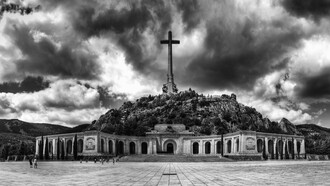Despite the regulations, fraternity hazing is still prevalent. And despite the risk of injury and death, there are still students joining a brotherhood. That’s the irony of it all!
Fraternity hazing can be too harsh as to inflict injuries. Or worse, death. Since its inception, this kind of initiation rites has already claimed not a few lives. Sadly, it’s still difficult to obtain the exact number of hazing victims. No central tracking system is in place for such deaths yet. Besides, the role of hazing in some incidents is subject to arguments. But, in so far as the available record is concerned, fraternity hazing has already claimed over a hundred deaths worldwide. In the Philippines alone, there are already at least 40 hazing deaths since 1954. The latest casualty died on Sunday, 17 September 2017.
Misleading account from ‘witness’
Initial reports say a concerned citizen found the victim on a pavement. The same citizen rushed him to a hospital but was declared dead on arrival. The victim was later identified as Horacio Castillo III, a first-year student at the University of Santo Tomas (UST) Manila.
The parents’ account
According to the victim’s parents, Castillo informed them he would stay overnight at the university campus. That was on Saturday evening, 16 September. He said he was going to attend the welcoming rites of the school-based fraternity. Apparently, the young Castillo was a neophyte of the Aegis Juris, one of UST’s fraternity.
Monday, 18 September came. Castillo’s parents received a call from an anonymous person. He notified them that their son was confined in a hospital.
The true story: a cover-up attempt
As the investigation on the matter progressed, it turned out that the victim was not found on a pavement. Rather, he died inside a hazing facility. The 22-year-old Horacio Castillo III was a freshman at the UST Faculty of Civil Law.
The said “concerned citizen” who brought the victim to the hospital was actually a fellow of the Aegis Juris fraternity. His name is John Paul Solano. When asked why he lied, Solano eventually admitted that it was what he was instructed to say. He implied that the instructions came from the officers and elders of the fraternity. These elders were either present during or well aware of the ongoing, initiation rites.
In response, the dean of UST College of Law, Nilo Divina, ordered the preventive suspension of Aegis Juris members and officers. He promised to cooperate with the investigation. Ironically, though, Divina’s decision of banning the fraternity members from the university campus seemed absurd. It rather made the investigation process more difficult. The suspension order only allowed the prime suspects of the crime to escape. In fact, some of them fled abroad right after the incident happened.
The Manila Police District further discovered several pieces of evidence. Most salient of which is a well-planned procedure to cover-up Castillo’s death. Because of this, each person-of-interest in the case tries to drop one another in the air.
Where is justice?
‘Do no injustice, suffer no injustice’. This is the motto that Aegis Juris embraces. It runs boldly across the fraternity’s website. Now, how does this motto justify a new recruit’s death?
Going back to the history of fraternity and based on recorded cases. Only a handful of hazing deaths worldwide have been resolved. And not many suspects are incarcerated. Sad, but it’s true!
So, will Castillo’s case be any different?
In the Philippines, particularly, it’s obvious that politics almost always come into play in cases like this. Many fraternity members hold key positions in the government. And they use their power to cover-up the issue. It’s no wonder then that up to this time since 1954, only a minimal number of suspects in fraternity hazing deaths are put to jail.
Sadly, the existing anti-hazing law in the Philippines has some loopholes. And the erring fraternities conveniently use these ambiguities to circumvent the issue around. It’s also ironic that lawmakers recall the law only when fatal incidents occur. It’s now high time lawmakers review and revise the Philippines’ Anti-Hazing Law of 1995. Castillo’s and the previous victims’ parents still trust in the justice system of the country. And they hope it will be served in the present administration.
Meanwhile, John Paul Solano, the fellow Aegean who attended to the dying Castillo seems to be all alone now. His fraternity brothers are trying to keep a distance from him one by one. The frat’s president himself denies having instructed him on what to do with Castillo’s body. Likewise, the rest of his fraternity brothers try to wash their hands off the case. Apparently, the elders, who are already practicing lawyers, are the ones encouraging the cover-up of the case. Is this what brotherhood all about? What an irony!















